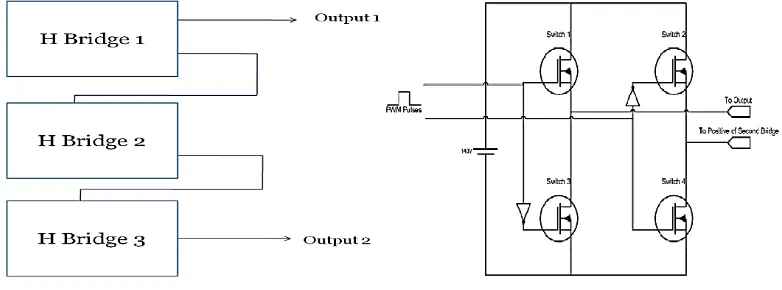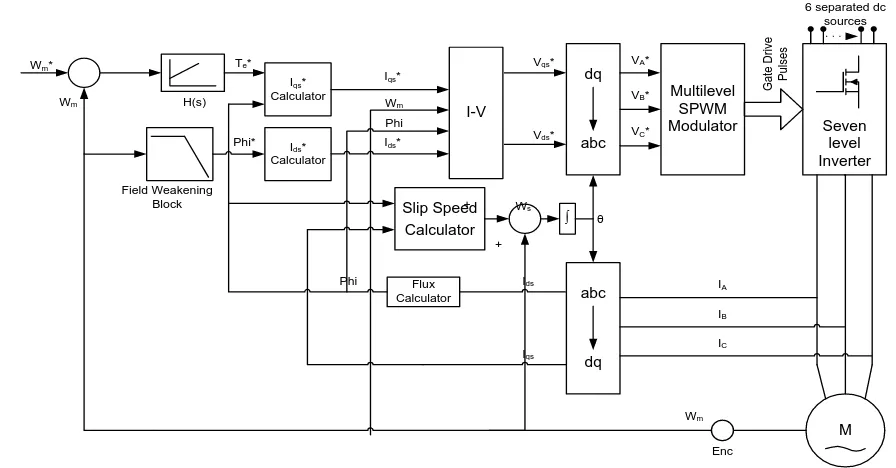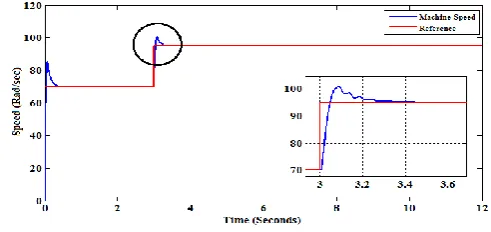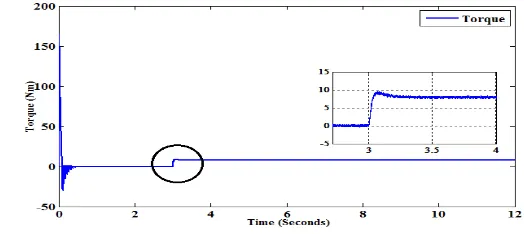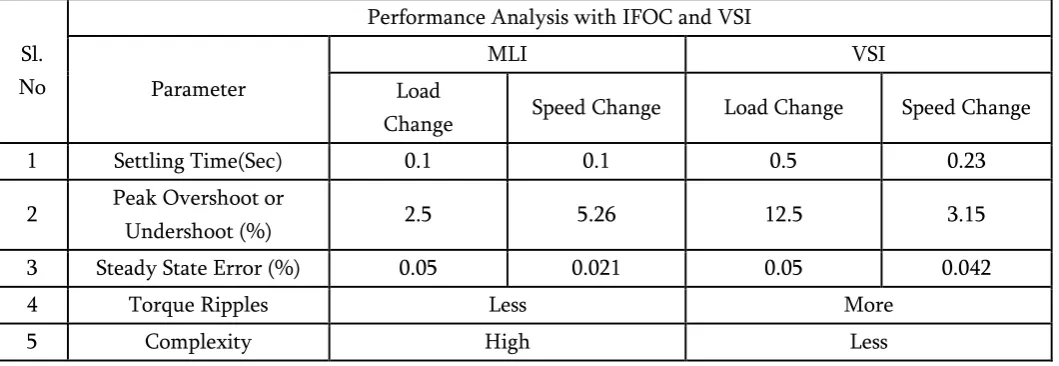Comparitive Analysis of Induction Motor Drive with Vector Control
Sarin MVAssistant Professor, EEE, MVJ College of Engineering Bangalore, , Karnataka, India
Abstract
Induction machines are the most generally utilized machines for commercial applications. They are mainstream for utilization as modern drives on account of its high efficiency, great power factor and greatly rugged nature. In this paper, voltage source inverter and multilevel inverter are utilized to excite drives. Here multilevel inverter gives about sinusoidal voltage with less harmonic distortion in voltage and current waveforms compared with voltage source inverter. The advancement of vector control methods upgraded the execution the performance and speed control in motor drives. Here we propose IFOC control for the induction motor drive. The rotor flux and torque producing current parts are decoupled by conversion to d-q reference edge and controlled utilizing a PI controller. A SPWM based inverter topology is utilized for VSI and for MLI, SPWM with Phase Disposition PWM system is utilized to encourage the induction motor drive. In this paper we have classified and analyzed distinctive parameters of Multi level inverter and Voltage source inverter encouraged IM drive with vector control. The execution of the machine is examined by plotting the aspects under distinctive working conditions.
Keywords : Voltage source inverter, multilevel inverter, Indirect field oriented control, Induction motor, Sine PWM, D-Q axes
NOMENCLATURE
iα,iβ, id, iq : Currents in α-β and d-q reference frame.
ia, ib, ic : Currents in abc reference frame.
Vα, Vβ,Vd, Vq : Voltages in α-β and d-q reference frame.
Ks : Transformation matrix.
d, q : Flux in d-q reference frame.
ω : Speed of machine.
R : Resistance of machine.
L : Inductance of machine.
Tem : Electromechanical torque.
P : Power output of machine.
Jeq : Moment of Inertia of machine.
p : No. of poles.
I. INTRODUCTION
scalar v/f control [1] is able to provide is able to provide speed variations but it does not give good control in transient conditions and it is operating only in steady state conditions. Indirect field oriented control (IFOC) [2] gives a high performance in induction motor drives by decoupling rotor flux and torque producing current components of stator current. In vector control or field oriented control [3] the dc machine like performance is attained by orienting the stator current with respect to the rotor flux in a way that independent control flux and torque is established. Thus with field oriented control the induction machine acquires every advantage of a dc machine control structure that is a very accurate steady state and transient control behavior with good dynamic performance.
Inherently voltage source inverters are used to feed induction motor drives for enhancing the drive performance. Voltage source inverter has less number of power electronic switches when compared with multilevel inverters. Multilevel inverters [4] are majorly different from the voltage source inverter where only two levels are generated. Multilevel inverters [5] have been widely used in the drives industry to run induction machines for high power configurations. Multilevel inverters classified into three types: Cascaded H Bridge [6], Diode clamped, Flying Capacitor. Cascaded MLI is the most important topology among the above three. It requires least number of components compared with the other topologies. It has modular configuration with less number of switches and also it requires less space. Sine PWM pulses are used here to drive the gate of power electronic switches. The transformation from abc reference frame to dq reference frame is controlled by PI controller. PI controller can drive the induction motor system more effectively with faster response, speed, shorter settling time and also it has simple structure and stable performance.
II. INVERTERS
A. Voltage source inverter
Switch 1
Switch 3
Switch 2
Switch 4
Input DC voltage
PWM Pulses
To Load
Figure 1: Basic diagram of Voltage source inverter
B. Multilevel inverter
This paper used a cascaded three phase seven level inverter to feed the induction machine. Each phase of the inverter contains three H Bridges. Each H bridge produce three different voltage levels +Vdc, 0,-Vdc by the operation of power electronic switches. Each H Bridge contains four switches and is supplied from a separate DC source. The output of the each H bridge is connected in series to obtain the stepped output waveform. PWM techniques are used to give gating pulses to the H bridges. Popular PWM techniques are Sine PWM, Space vector PWM, Selective harmonic elimination etc. In this scheme, Sine PWM technique is used to give gating pulses to the cascaded H bridge inverter. The multicarrier PWM technique for generating SPWM is of three types namely Phase Disposition (PD), Phase Opposition Disposition (POD) and Asymmetric POD (APOD). In this scheme, PD technique is used. In this technique, all the carrier waveforms are in phase with each other. The reference sine wave for PWM pulse generation in open loop is provided by a sine wave generator and in closed loop it is generated by the controller. The basic block diagram of a cascaded H bridge MLI for is shown below.
III. VECTOR CONTROL
Induction motor is an asynchronous machine that can run at different speeds. Different techniques are available for the speed control of induction machine. One of the speed control strategies is vector control. Unlike scalar control it can be controlled both magnitude and direction. The vector control technique [10] which is known as field oriented control (FOC), allows an induction motor to be driven with high dynamic performance that is comparable to the characteristics of dc motor. In vector control, an induction motor is controlled under all operating conditions like a separately excited dc motor. The induction motor behaves like a dc motor in which the field flux linkage and armature flux linkage created by the respective field and armature currents. In induction machine, change of any specific quantity results in the change of the other. It is very difficult to achieve effective speed control by conventional methods. The modelling of three phase induction machine parameters are done by Clarke’s and Park’s transformations to a two axis reference frame - αβ or dq. The dq reference frame is mainly used for control purposes and αβ reference frame is used for modelling purposes. In vector control, the flux and torque components of the induction machine are decoupled by the Park’s transformation to a two phase synchronously rotating dq reference frame from three phase ABC reference frame. In synchronously rotating dq reference frame, it provide independent control of flux and torque. The Q axis component control the speed of the motor and D axis component controls the flux of the machine. Thus, we can achieve a separately excited DC motor like speed control for AC machines. The FOC scheme is divided into Direct field oriented control (DFOC) and Indirect field oriented control (IFOC).
Wsrà Calculated slip speed
Figure 3: DFOC basic model Figure 4: IFOC basic model
In the DFOC strategy rotor flux vector is either measured by means of flux sensor or by using voltage equations. It is not suitable for high speed applications because sensors make the circuit more complex. Flux and angle feedback is calculated by voltage and current equations. In IFOC strategy rotor flux vector is calculated using the field oriented control equations requiring a rotor speed measurement. Here flux is derived from the measured value of stator current. IFOC can exhibit high performance in induction motor drives by decoupling rotor flux
M
and torque producing current components of stator current. It gives good dynamic performance and efficient operation with induction motor drives.
The calculation of flux from measured value of stator current is little bit complex but the total performance given by the system is high compared with any other method. Thus it is best suited for asynchronous machines. Besides, by the use of DSP and microcontrollers computational complexity can be minimized.
A. IFOC Scheme
dq
Figure 5: Indirect field oriented Control Block Diagram
Figure 5: Indirect field oriented Control Block Diagram
B. Induction Machine Mathematical Model
The mathematical model of induction machine is developed in synchronously rotating reference frame:
Transformation Matrices:
Clarke’s Transformation matrix for three phase reference frame to two phase stationary reference frame α-β.
cos sin
The equations used for the purpose of modeling the machine are obtained from their equivalent circuits (Fig.6 and Fig.7) as follows:
Rs ωdλqs
Vds, Vqs, Vdr and Vdr are respectively the stator and rotor voltages in dq axes. The flux linkage equation is given by,
M
mutual inductance between stator and rotor
(
)
(
)
C. Controller design
The controller parameters were designed based on trial and error. It gives torque reference from speed error. In order to obtain the flux reference, a field weakening block was used. The speed error converted into torque reference that was converted into corresponding q axis current by the following equations (20):
*
The reference current converted to reference voltage by using the following equations (21) and (22):
0 0.5 1 1.5 2 2.5 3 3.5 4 4.5 5
IV. RESULTS AND OBSERVATIONS
The simulations were carried out using Simulink for change of load torque as well as change of reference speed. The vector controlled drive was found to get responses very quickly and precisely. The initial transients are the result of applying full terminal voltage to the machine. In practical cases, the voltage will be increased gradually by means of a starter and the initial high transients can be eliminated.
A. Speed waveform of VSI and MLI fed IM
The speed reference given for both VSI and MLI fed IM is 80rad/s. Compared to VSI fed machine MLI fed machine initial peak value is less that is shown in figure 8 and figure 9.
Figure 8: Speed waveform of VSI Figure 9: Speed waveform of MLI
B. Case 1: Change of reference speed
The change of reference speed here taken from 70rad/s to 90rad/s at a step time of 3seconds. Figure 10 and figure 11 gives visual display of it.
Figure 10: Speed waveform for VSI fed IFOC
(change of speed given at t=3s) Figure 11: Speed waveform for MLI fed IFOC
(change of speed given at t=3s)
C. Case 2: Torque waveform for Change of speed reference
The speed reference applied here is changed from 70rad/s to 90rad/s at a step delay of 3s. Due to sudden change in speed causes a peak in the torque waveform for both VSI and MLI then it stabilized.
Figure 12: Torque waveform for VSI fed IFOC
Figure 13: Torque Waveform for MLI fed IFOC
D. Case 2: Speed waveform for Change of load torque
When load torque is applied the torque magnitude increases from 0Nm to 8Nm at t=3seconds. In VSI fed machine the change in speed is high compared to MLI fed machine showing in the figure 14 and figure 15.
Figure 14: Speed waveform for change of load torque
for VSI fed IFOC from 0Nm to 8Nm at t=3s Figure 15: Speed waveform for change of load torque
for MLI fed IFOC from 0Nm to 8Nm at t=3s
E. Case 2: Torque waveform for Change of load
Similarly the load change given here from 0Nm to 8Nm at step time of t=3s. Corresponding change can be seen from following figure 16 and figure 17.
Figure 16: Torque waveform for change of load
torque for VSI fed IFOC from 0Nm to 8Nm at t=3s Figure 17: Torque waveform for change of load
TABLE I. COMPARISON OF VSI & MLI
V. CONCLUSION
This report has presented the comparison and analysis of voltage source inverter and multilevel inverter fed induction motor drive with sine PWM technique. The IFOC scheme for speed control of voltage source inverter and multilevel inverter fed induction motor was simulated in MATLAB/Simulink. The dynamical requirement of IFOC is achieved by applying PI controller in transient and steady state voltage source inverter fed drive has more initial transients, overshoot, settling time and multilevel inverter gives nearly sinusoidal output voltage with less harmonic distortion in voltage and current waveforms.
The IFOC model is validated by changing reference speed and load torque dynamically. From the comparison it is seen that for MLI fed drive, the settling time is reduced by 0.4s in case of load change and 0.13s in case of speed change, as compared with the VSI fed drive. Peak overshoot is reduced by 10% in case of load change. For speed change overshoot is less for VSI fed drive. Though the steady state error remains the same in case of load change, it is reduced by 0.021% in case of speed change for the MLI fed drive. It was observed that the torque ripples were less for MLI fed drive as compared with VSI fed drive. The complexity of the MLI fed drive is much higher as compared with VSI fed drive but it gives better performance and is suitable for industrial applications.
VI. REFERENCES
[1] M. Baba, C. Lasku, I. Boldea, Z converter control of a V/f induction motor drive,IEEE 2012, pp 529-534.
[2] S. Grouni, R. Ibtiouen, M. Kidouche, and O. Touheemi, “Improvement Approach on Rotor Time Constant
Adaptation with Optimum Flux in IFOC for Induction Machines Drives”, World Academy of Science, Engineering and Technology, pp. 356-360, 2008.
Sl. No
Performance Analysis with IFOC and VSI
Parameter
MLI VSI
Load
Change Speed Change Load Change Speed Change
[3] K T D Temberkar : Improvement and analysis of speed control of three phase induction motor drive including two methods; Second Intnl. Conf. on Emerging Trends in Engg & Tech., ICETET-09, pp736-741
[4] António P. Martin, Emmanuel C. Meireles, Adriano S. Carvwalho, PWM-Based Control of a Cascaded
Three-Phase Multilevel Inverter.
[5] S Albert Alexander and T Manikandan: Analog Control Scheme for Cascaded Multilevel Inverters Based
on Multiple Carrier PWM Technique, International Conference on Recent Advancements in Electrical, Electronics and Control Engineering, 2011 pp57-62
[6] S Khomfoi, N Praisuvana : A Hybrid Cascaded Multilevel Inverter for Interfacing with Renewable Energy
Resources; The Intnl. Power Electronic Conf.,2010, pp2912-2917.
[7] Muhamed Jemli , Hechmi Ben Azza, Moncef Gossa,Real-time implementation of IRFOC for Single-Phase
Induction Motor drive using dSpace DS 1104 control board,Simulation Modelling Practice and Theory 17 Science Direct,2009, pp 1071-1080
[8] Omar Ellaban, Joeri Van Mierloe and Philippe Lataire, A Comparative Study of Different Control
Techniques for an Induction Motor Fed by a ZSource Inverter for Electric Vehicles,Proceedings of the 2011 International Conference on Power Engineering, Energy and Electrical Drives
[9] F. Z. Peng, A. Joseph, j. Wange, M. S. Shen, L. Chen and Z.G. Pan, “ZSource Inverter for motor drives,”
IEEE Trans. on Power Electronics, vol. 20, no. 4, 2005, pp. 857-863.
[10] P.C.Krause ; Analysis of Electric Machinery And Drive System
[11] A.Kusaeguer, Dr. S.F.Kodad, Dr.B.V.Sankar ram : Modelling of induction machine and control of speed
using hybrid controller technology; Journal of Theoretical And Applied Information Technology; 2005-2009
[12] Malinowski M., Gopkumar K., Rodriguez J., Pérez M. A.: A survey on cascaded multilevel inverters, IEEE
Transactions on Industrial Electronics, vol. 57, nº. 7, , Jul. 2010pp. 2197-2206.
[13] Chee Muun Ongi ; Dynamic Simulation of Electric Machinery Using MATLAB/Simulink
[14] Mr.Darsan Patel,Dr.R.Saravanakumar,Dr.K.K.Ray,Mr.Ramesh.R, Review of Various Carrier based PWM
Methods for Multilevel Inverter
[15] Serwet Tunser and Beir Dandil : Four quadrant control of multi-level inverter induction motor drives;,
